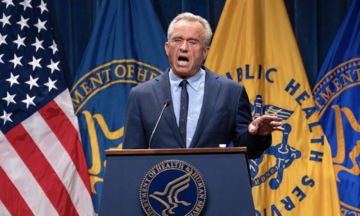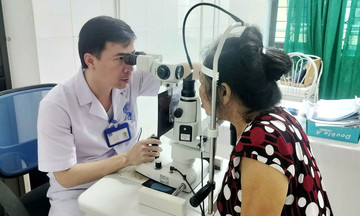When high temperatures combine with high humidity, the body is susceptible to heatstroke, reducing its ability to regulate its temperature. Common symptoms include dizziness, headaches, fatigue, nausea, rapid heartbeat, and hot, red skin.
Doctor Nguyen Hoai Vu, from the cardiology department of Tam Anh General Hospital in Hanoi, explains that many initial heatstroke symptoms resemble warning signs of cardiovascular diseases like hypertension, coronary artery disease, and arrhythmias. Many people often mistake these signs, missing valuable treatment time and increasing the risk of complications.
Dizziness and lightheadedness
This condition often occurs when the body is dehydrated during hot weather. However, sudden dizziness or lightheadedness, especially while resting or accompanied by heart palpitations and cold sweats, could indicate a heart rhythm disorder, orthostatic hypotension, or underlying heart failure.
Fatigue and exhaustion
Heatstroke can cause exhaustion as the body loses water and salt through sweat. However, if fatigue is prolonged, doesn't improve with rest, and is accompanied by shortness of breath and an abnormally rapid heart rate, it could be due to heart disease. Some cases of mild heart attacks in older adults also present with similar symptoms, making them easily overlooked.
 |
Fatigue and exhaustion can also be warning signs of a heart attack. Image generated by AI. |
Shortness of breath
Hot weather forces the body to increase blood circulation and sweat more to cool down, causing mild shortness of breath during physical activity. However, shortness of breath that occurs even while resting, especially at night or accompanied by swollen feet and persistent fatigue, warrants medical attention as it could be a sign of heart failure or valvular heart disease.
Abnormally rapid heart rate
In hot conditions, the heart rate may increase slightly due to the ambient temperature. However, a sudden, unexplained rapid heartbeat, accompanied by dizziness or chest pain, is likely a sign of atrial fibrillation or other dangerous arrhythmias.
Nausea and mild abdominal pain
Doctor Vu says nausea and abdominal pain are often disregarded, attributed to heatstroke or food poisoning. In reality, some heart attack patients, especially older adults, may experience only nausea and epigastric pain (above the navel) without the typical chest pain.
Chest pain or tightness
This symptom can be caused by exhaustion or heatstroke during outdoor activities in sunny weather. Chest heaviness, tightness, or pain radiating to the left shoulder or down the arm is a typical symptom of angina or a heart attack. If not detected and treated promptly, prolonged myocardial ischemia can lead to heart failure and even sudden death.
Doctor Vu adds that most cases of mild heatstroke can be resolved with rest, fluids, and electrolyte replenishment. However, if the condition worsens without timely intervention, heatstroke can progress to heatstroke – a serious medical emergency with the potential for brain, heart, and kidney damage. Whether caused by heatstroke or heart conditions, seemingly simple symptoms like dizziness, fatigue, and shortness of breath require close monitoring.
If symptoms don't improve with rest and cool fluids, or if they are accompanied by chest pain, shortness of breath, cold sweats, and rapid heartbeat, seeking medical attention is crucial. Early examination helps determine the exact cause, allowing doctors to provide appropriate treatment.
Older adults or those with underlying heart conditions should manage their blood pressure and blood sugar levels effectively and undergo regular health checkups to assess risks. To prevent heatstroke, everyone should limit exposure to direct sunlight during peak hours, stay hydrated with adequate fluids and electrolytes, wear loose-fitting clothing, and avoid strenuous activity in high temperatures.
Ly Nguyen
| Readers can submit questions about cardiovascular diseases here for doctors to answer. |












